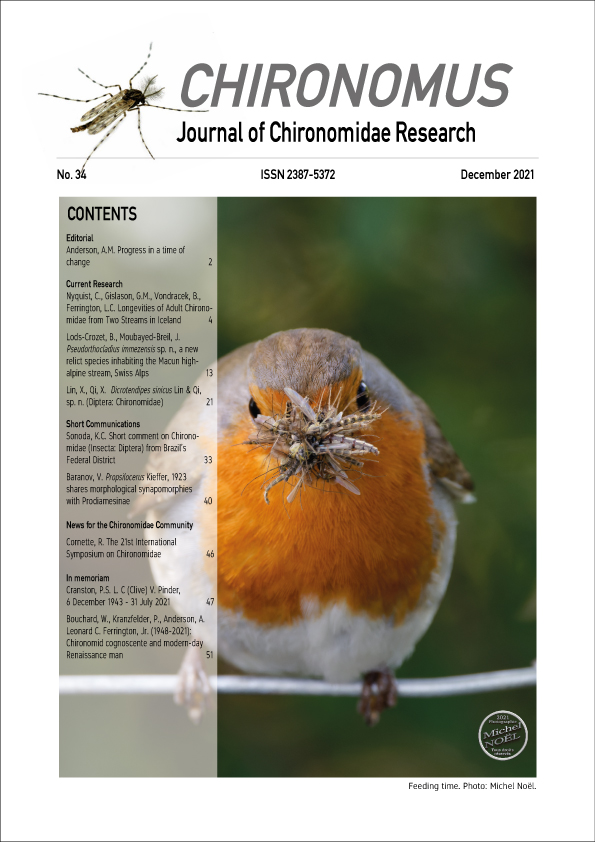Short comment on Chironomidae (Insecta: Diptera) from Brazil’s Federal District
Main Article Content
Abstract
There is much left to learn about the diversity of Chironomidae in Brazil. To help to resolve this problem, a preliminary study of the Chironomidae present in a stream located in center of Brazil was proposed. The aim of this research was to provide a first record of the Chironomidae assemblage at Sarandi stream, in the Brazilian Cerrado. Samples were taken using a handheld D-net from the stream in October 2009. The samples were transported to the laboratory where the material was processed and the Chironomidae specimens were slide mounted, counted and identified to genera. Ninety individuals belonging to 15 genera were found, Chironomini was the richest tribe, with seven genera, while Tanytarsini showed the highest abundance of individuals (55.6%). Overall, Rheotanytarsus (20%), Tanytarsus ortoni-group (16.7%) and Lopescladius (14.4%) were the most abundant genera.
Downloads
Article Details

This work is licensed under a Creative Commons Attribution 4.0 International License.
Authors who publish with this Open Access journal agree to the following terms:
- Authors retain copyright and grant the journal right of first publication with the work simultaneously licensed under a Creative Commons Attribution License 4.0 that allows others to share the work with an acknowledgement of the work's authorship and initial publication in this journal.
- Authors are able to enter into separate, additional contractual arrangements for the non-exclusive distribution of the journal's published version of the work (e.g., post it to an institutional repository or publish it in a book), with an acknowledgement of its initial publication in this journal.
- Authors are permitted and encouraged to post their work online (e.g., in institutional repositories or on their website) prior to and during the submission process, as it can lead to productive exchanges, as well as earlier and greater citation of published work (See The Effect of Open Access).
